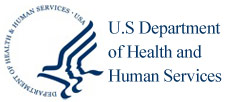
CMS hosts varied recurring stakeholder engagement sessions to share information related to the agency’s response to COVID-19. These sessions are open to members of the healthcare community and are intended to provide updates, share best practices among peers, and offer attendees an opportunity to ask questions of CMS and other subject matter experts.
Call details are below. Conference lines are limited so we highly encourage you to join via audio webcast, either on your computer or smartphone web browser. You are welcome to share this invitation with your colleagues and professional networks. These calls are not intended for the press.
Calls recordings and transcripts are posted on the CMS podcast page at: https://www.cms.gov/Outreach-and-Education/Outreach/OpenDoorForums/PodcastAndTranscripts
CMS COVID-19 Office Hours Calls (Tuesdays at 5:00 – 6:00 PM Eastern)
Office Hour Calls provide an opportunity for hospitals, health systems, and providers to ask questions of agency officials regarding CMS’s temporary actions that empower local hospitals and healthcare systems to:
- Increase Hospital Capacity – CMS Hospitals Without Walls;
- Rapidly Expand the Healthcare Workforce;
- Put Patients Over Paperwork; and
- Further Promote Telehealth in Medicare
This week’s Office Hours:
Tuesday, May 26th at 5:00 – 6:00 PM Eastern
Toll Free Attendee Dial In: 833-614-0820; Access Passcode: 8977438
Audio Webcast link: https://protect2.fireeye.com/url?k=a9ce3c3e-f59a1515-a9ce0d01-0cc47a6d17cc-7bec62c1673fbda4&u=https://engage.vevent.com/rt/cms2/index.jsp?seid=2012
Lessons from the Front Lines: COVID-19 (Fridays at 12:30 – 2:00 PM Eastern)
Lessons from the Front Lines calls are a joint effort between CMS Administrator Seema Verma, FDA Commissioner Stephen Hahn, MD, and the White House Coronavirus Task Force. Physicians and other clinicians are invited to share their experience, ideas, strategies, and insights with one another related to their COVID-19 response. There is an opportunity to ask questions of presenters.
This week’s Lessons from the Front Lines:
Friday, May 29th at 12:30 – 2:00 PM Eastern
Toll Free Attendee Dial-In: 877-251-0301; Access Code: 6350189
Web Link: https://protect2.fireeye.com/url?k=3ac0c382-6695ca52-3ac0f2bd-0cc47a6a52de-24c0c4f34c651fd8&u=https://engage.vevent.com/rt/cms2/index.jsp?seid=2075
Weekly COVID-19 Care Site-Specific Calls
CMS hosts weekly calls for certain types of organizations to provide targeted updates on the agency’s latest COVID-19 guidance. One to two leaders in the field also share best practices with their peers. There is an opportunity to ask questions of presenters if time allows.
Home Health and Hospice (Tuesdays at 3:00 PM Eastern)
Tuesday, May 26th at 3:00 – 3:30 PM Eastern
Toll Free Attendee Dial-In: 833-614-0820; Access Passcode: 4666966 Audio Webcast Link: https://protect2.fireeye.com/url?k=07ba82da-5bef8b0a-07bab3e5-0cc47a6a52de-c3017c992953af61&u=https://engage.vevent.com/rt/cms2/index.jsp?seid=1909
Nursing Homes (Wednesdays at 4:30 PM Eastern)
Wednesday, May 27th at 4:30 – 5:00 PM Eastern
Toll Free Attendee Dial-In: 833-614-0820; Access Passcode: 1243649 Audio Webcast Link: https://protect2.fireeye.com/url?k=1c377fbb-4062766b-1c374e84-0cc47a6a52de-95a2149fa0fbe65d&u=https://engage.vevent.com/rt/cms2/index.jsp?seid=2034
Dialysis Organizations (Wednesdays at 5:30 PM Eastern)
Wednesday, May 27th at 5:30 – 6:00 PM Eastern
Toll Free Attendee Dial-In: 833-614-0820; Access Passcode: 6152699 Audio Webcast Link: https://protect2.fireeye.com/url?k=efc05c42-b3955592-efc06d7d-0cc47a6a52de-90f98f30cb504b92&u=https://engage.vevent.com/rt/cms2/index.jsp?seid=2123
Nurses (Thursdays at 3:00 PM Eastern)
Thursday, May 28th at 3:00 – 3:30 PM Eastern
Toll Free Attendee Dial-In: 833-614-0820; Access Passcode: 2988422 Audio Webcast Link: https://protect2.fireeye.com/url?k=62ab152d-3eff3c06-62ab2412-0cc47a6d17cc-41a14602bb444499&u=https://engage.vevent.com/rt/cms2/index.jsp?seid=2128
To keep up with the important work the White House Task Force is doing in response to COVID-19 click here: https://protect2.fireeye.com/url?k=36fa2226-6aae0b0d-36fa1319-0cc47a6d17cc-2d06c219f858d641&u=http://www.coronavirus.gov/. For information specific to CMS, please visit the Current Emergencies Website.




